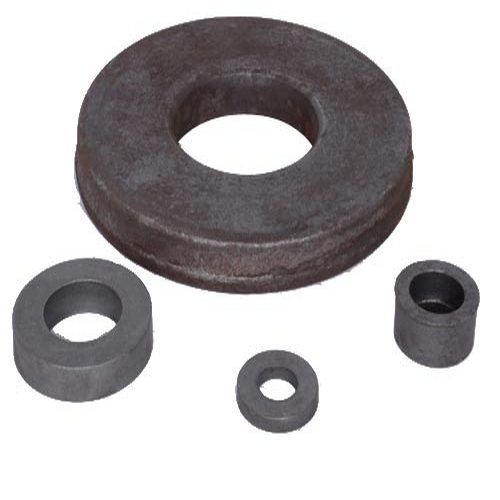Mastering the Art of Seamless Ring Billet Making: From Raw Material to Perfect Circularity
A ring rolling machine is a high-precision manufacturing device used for rapidly and efficiently producing seamless metal rings with varying cross-sectional shapes. The machine is specifically engineered to produce rings with a wide range of sizes and applications, including gears, flanges, bearings, and certain aerospace and automotive components.
Design:
The design of a ring rolling machine typically comprises several main components, including the main roll, mandrel roll, idle roll, axial rolls, and the machine frame. These components work in tandem to produce a seamless ring with desired dimensions and properties. The design priorities include precision, durability, efficiency, and adaptability to handle different materials and ring dimensions. The key elements of a ring rolling machine design are as follows:
1. Main Roll:
- Also known as the driven roll, this component rotates about a fixed axis and imparts a radial force on the workpiece. The direction of the force is perpendicular to the ring's radius.
- The main roll's surface is designed to securely hold and drive the ring to ensure constant contact between the roll and the workpiece.
2. Mandrel Roll:
- Positioned inside the workpiece, this component provides the inner shape to the workpiece.
- Its design ensures that the wall thickness of the formed ring can be accurately controlled and maintained.
3. Idle Roll:
- This component is crucial for maintaining a consistent ring size throughout the process.
- The idle roll moves radially toward the workpiece while staying closely aligned with the main roll, so it can accurately form the final geometry of the ring.
4. Axial Rolls:
- Located on either side of the ring, axial rolls secure the workpiece in place and exert an axial force.
- They are responsible for controlling the height of the ring during the rolling process and maintaining radial uniformity.
5. Machine Frame:
- The frame provides a sturdy base and support structure for the various components of the ring rolling machine.
- It should be designed to resist high stress generated during the ring rolling process and minimize vibrations that could impact the quality of the formed rings.
Control systems and automation also play a crucial role in modern ring rolling machine designs. Programmable logic controllers (PLCs) and computer numerical control (CNC) systems are commonly used for controlling the movement and coordination of the machine components. Advanced sensors and predictive algorithms can also enable real-time monitoring and adjustments to ensure maximum precision and repeatability.
In order to optimize the design of a ring rolling machine, engineers need to consider factors such as material properties, required ring dimensions, and production efficiency. Comparing various ring rolling machines and selecting the optimal design for a specific application requires an in-depth understanding of the machines' capabilities, limitations, and operating parameters.






